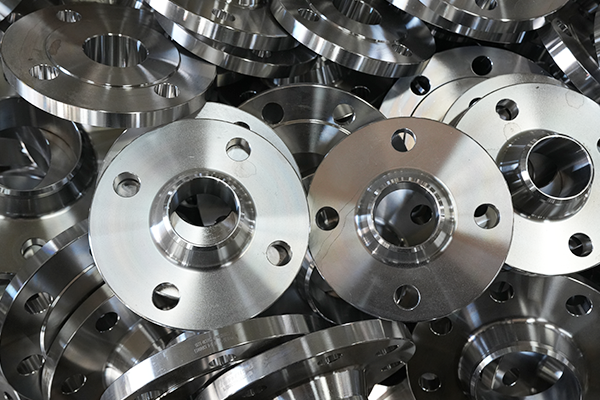NewsDetails
The Critical Role of Flanges in the Petrochemical Industry
author:Zhantong time:2025-05-23 00:40:17 Click:59
Flanges are essential components in petrochemical plants, ensuring safe, leak-proof connections in high-pressure, high-temperature, and corrosive environments. Below is a detailed analysis of their key functions, selection criteria, and industry-specific challenges.
1. Key Functions of Flanges in Petrochemical Plants
(1) Secure Piping Connections
Enable modular assembly of pipelines, valves, and equipment.
Facilitate maintenance and inspection by allowing easy disassembly.
(2) Pressure & Temperature Management
Withstand extreme conditions (e.g., high-pressure steam, cryogenic LNG).
Prevent leaks in flammable or toxic fluid systems (e.g., hydrocarbons, acids).
(3) Corrosion & Chemical Resistance
Must endure H₂S (sour gas), acids (HCl, H₂SO₄), and caustics (NaOH).
Special materials (duplex steel, nickel alloys) prevent degradation.
(4) Safety & Regulatory Compliance
Follow ASME B16.5, API 6A, NACE MR0175 for sour service.
Critical in offshore platforms, refineries, and chemical reactors.
(3) Face & Gasket Considerations
Raised Face (RF) – Most common, used with spiral-wound gaskets.
Ring-Type Joint (RTJ) – Mandatory for wellheads & Class 2500+ flanges.
PTFE-lined flanges – For aggressive acids (e.g., sulfuric, hydrofluoric).
3. Critical Challenges & Solutions
(1) Leak Prevention in Hazardous Service
Problem: Fugitive emissions (e.g., methane, toxic gases).
Solution:
Use RTJ flanges with metal gaskets (API 6A).
Apply bolt-load monitoring to ensure proper sealing.
(2) Corrosion & Erosion in Aggressive Media
Problem: Pitting, crevice corrosion in seawater or acidic fluids.
Solution:
Super Duplex (F55) or Inconel 625 cladding.
Cathodic protection for offshore flanges.
(3) Thermal Cycling & Fatigue
Problem: Repeated heating/cooling causes flange warping.
Solution:
Weld Neck flanges (better stress distribution).
Flexible gaskets (graphite for high thermal expansion).
(4) Compliance with Industry Standards
API 6A – Mandatory for wellhead equipment.
NACE MR0175/ISO 15156 – Required for sour service (H₂S).
ASME B31.3 – Process piping design rules.
4. Real-World Petrochemical Applications
Refineries: WN flanges (A182 F11/F22) in crude distillation units.
Offshore Platforms: Duplex steel flanges with cathodic protection.
Ethylene Crackers: High-alloy RTJ flanges (Inconel 625) for extreme heat.
Sulfur Recovery Units (SRUs): PTFE-lined flanges for sulfuric acid resistance.
5. Future Trends in Flange Technology
Smart Flanges: Embedded sensors for real-time pressure/temperature monitoring.
3D-Printed Flanges: Custom alloys for niche chemical processes.
Eco-Friendly Gaskets: Graphene-enhanced seals for zero emissions.
Conclusion
Flanges are the backbone of petrochemical piping systems, ensuring safety, efficiency, and regulatory compliance. Proper selection (type, material, face) is crucial to prevent failures in extreme conditions.
 Recommended Products
Recommended Products
 Contact us
Contact us
—— Contact:Manager
—— Tel:+86 15231788966
—— Email:info@zhantongpipe.com
—— Url:https://www.zhantongpipe.com
—— Address:Mengcun Hui Autonomous County, Cangzhou City, Hebei Province









